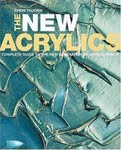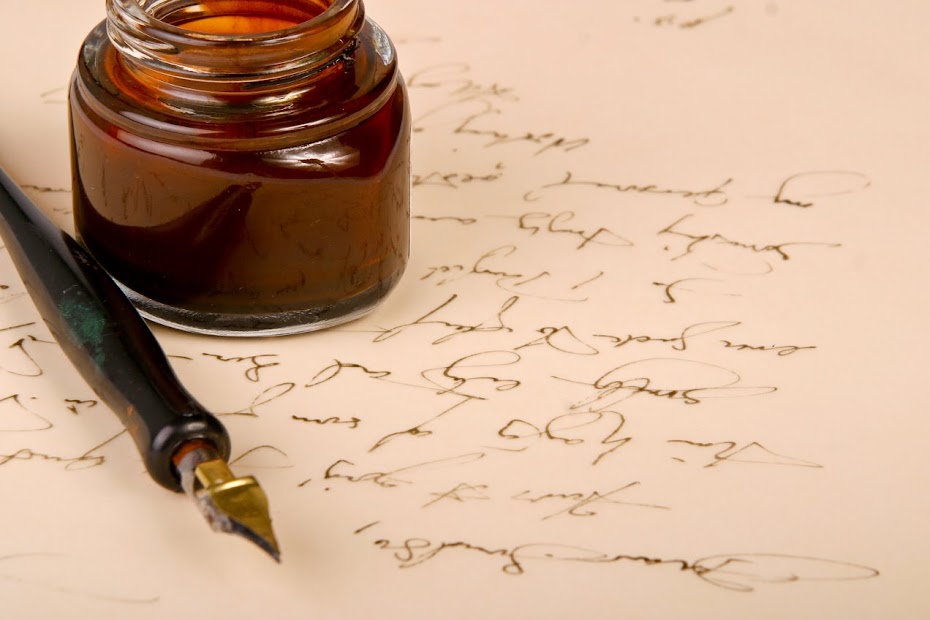Thank you, thank you, thank you to Billie!
Read it:
Welcome Back
If you have decided to try acrylic paint for the first time, gone to the art store to purchase some paint, brushes etc and been bewildered by the choice, this book is for you. If you were too embarrassed to ask for help in the store, this book is for you. I started an art journal in May 2009, and soon discovered that layering water colour paint, or water soluble wax crayons, didn’t really work. I had seen people using Liquid acrylics and had some of my fathers Cryla paint to try, but all the gels and mediums were a mystery. I wanted a book that would explain the different kinds of acrylic paint, what the differences were and what I could paint on. This book did just that. Today I will be reviewing the following book
The New Acrylics;
Complete Guide to the New Generation for Acrylic Paints
by Rheni Tauchid

Published by Watson-Guuptill Publications
ISBN 0-8230-3159-4
Chapter 1; The language of Acrylics
Here you are introduced to just what acrylic paint is. The differences between the very fluid acrylics through to the heavy body (thick) acrylic paint. There is an explanation of the difference between student and artist grade paint.
Chapter 2; Materials and Equipment
The most comprehensive description of the different surfaces you can paint on to and how to prepare them. The different kinds of implement that you could use to paint with.
Chapter 3; About Colour
Here you will find descriptions about colours and the differences between various pigments, both natural and synthetic. This is a kind of Features and Benefits description of different colour groups. If the descriptions on the labeling of paint tube, jars bewilders you, there is an excellent description of what the various terms mean. Metallic, iridescent and other unique colours are also described.
Chapter 4; Acrylic Mediums
This is one of my favorite chapters in the book. As a total novice to acrylics, mediums were a mystery, they look the same in pots, they sound similar in their names. Before this book I had written off experiment with mediums, as too costly. This chapter starts with a review of the main groups of mediums and uses pictures to compare different mediums, to various food stuffs; honey, icing, cream. Things that most people can relate too…inspired! After this there are dedicated sections on each of the mediums, showing applications for which each medium is suited. A perfect glossary to refer to, for future projects. No more blind date buying of mediums, just to see what they do.
Chapter 5; Basic Applications
This chapter has a description of techniques - not a step by step but enough information for you to understand techniques; under painting, glazing etc and their effects on colours. How you apply them to your own creativity, is still wide open. This is a very clever book, at no point does the author attempting to ‘push’ the reader into any particular style. It is so refreshing to read this style of work, plenty of inspiration, without feeling forced into a particular style of working.
Chapter 6; Alternative Approaches
Techniques a plenty! Here is where there are some excellent step by step tutorials. Interestingly, even here the tutorials are just for a specific technique – still not trying to ‘tell’ the reader where these ’should’ be used. You might expect me to want to be told where to apply these techniques, since I’m a total beginner but everyone has their own opinion about what art is to them, so this is actually perfect. I had so many ideas while reading this book, about how I could use the paints/mediums and techniques. Maybe if the book had tried to ‘tell’ me where I should be using them, I might not try my own ideas and either think my way was wrong or just follow a particular project and not experiment.
There is a generous section on using acrylics for printing. Some great ideas to try, 3D work and mixed media are also covered.
Chapter 7; Decorative Objects
A selection of step by step projects, using the techniques described in the earlier sections of the book.
Summing Up
What I love about this book, is that it gives you a comprehensive description of the different paints and what they do, without pushing you toward any particular style of painting. Other art books want to teach me how to use acrylics to look like watercolours or to paint in the oil painting style. This book could have been called ‘The Dictionary of Acrylics’ or ‘All the things you’ve always wanted to ask about acrylic paint, but were afraid to ask.’ If you are passionate about colour you will love this book, the author is clearly passionate about the subject and her style of writing is inspiring and engaging as well as informative.
This book is a perfect reference guide for the new painter, and for more established artists who want to try some new mediums or techniques. There is some superb artwork in the book and each new page, just makes you go WOW. I defy anyone to look through this book and not be desperate to get to their paint after reading it.
I started reading this book knowing NOTHING about acrylics. Intimidated by the choices of paint available and not knowing what kinds of products to purchase. I did have a clear idea of how I wanted a finished piece to look but needed advice on what products would be suitable to achieve this. This is the most inspiring book on art I’ve ever bought. I have learnt which paint to buy to get the effects I’m looking for, which mediums would be suitable and how to use them. I am now very excited about all the amazing things that acrylic paint can do. I now can’t wait to get some paint and start experimenting. My fear of painting has, at least in part, been replaced by excitement about all the possibilities of what can be achieved with acrylics.
This is a fantastic book, thank you Rheni for the wealth of information packed into this book and for allowing your reader space, to use the materials and technique’s in their own way. This is a MUST have book for anyone interested in acrylics, a fantastic reference and research book for all your acrylic questions. Would I buy it again? Definitely and I’ve recommended it to all my friends too.

If it was not for this book, I would not be the artist I am today!! I have sold hundreds of paintings since reading the 1st book and have just ordered the 2nd!!! Very much looking forward to seeing where you will send me next.
ReplyDeleteThanks Rheni
A.O
Hi Rehni, this is a touch decieving dont you think? I got your book and saw this pic.
ReplyDeletehttp://www.artmaterialsretailer.com/images/hotnewproducts/NP.CROWNPUBLISHING.jpg